
Soils and Rocks
Scope & Guideline
Bridging Theory and Practice in Soil and Rock Studies
Introduction
Aims and Scopes
- Geotechnical Engineering and Soil Mechanics:
The core focus of the journal is on Geotechnical Engineering, exploring the mechanical behavior of soils and rocks under various conditions, including loading, environmental influences, and different construction practices. - Numerical and Experimental Analysis:
The journal promotes the use of both numerical simulations and experimental methods to study soil and rock properties, providing a comprehensive understanding of geotechnical phenomena. - Environmental Geotechnics:
Research addressing the interaction between geotechnical engineering and environmental issues, such as pollution and waste management, is a key area, emphasizing sustainable practices in soil and rock use. - Innovative Materials and Techniques:
The journal also highlights studies on new materials (such as geosynthetics and nanomaterials) and innovative techniques for soil stabilization and improvement, contributing to advancements in construction methodologies. - Education and Professional Development:
There is a growing emphasis on educational methodologies and professional development within the field of geotechnical engineering, focusing on improving teaching practices and learning outcomes.
Trending and Emerging
- Sustainable and Eco-Friendly Practices:
A growing emphasis on sustainability is evident in recent publications, focusing on eco-friendly materials and techniques for soil stabilization and construction, which align with global environmental goals. - Advanced Computational Techniques:
There is an increasing trend towards the use of advanced computational methods, including machine learning and artificial intelligence, for soil behavior prediction and geotechnical analysis. - Climate Change Impact Studies:
Research addressing the effects of climate change on soil behavior and geotechnical practices is becoming more prevalent, indicating a response to global environmental challenges. - Smart Geotechnical Engineering:
The integration of digital technologies and smart systems in geotechnical engineering, such as IoT applications for monitoring soil conditions, is emerging as a significant theme in recent publications. - Interdisciplinary Approaches:
There is a notable trend towards interdisciplinary research that combines geotechnical engineering with other fields, such as environmental science and urban planning, to address complex geotechnical challenges.
Declining or Waning
- Traditional Soil Testing Methods:
There has been a noticeable decline in papers focused solely on traditional soil testing methods, as newer technologies and methodologies gain traction in the field. - Static Analysis of Soil Behavior:
Research that primarily relies on static analysis without considering dynamic or real-world conditions appears to be waning, as the focus shifts towards more comprehensive dynamic analyses. - Historical Case Studies:
While historical case studies were once prevalent, there is a decreasing trend in their publication, likely due to the growing preference for innovative experimental approaches and real-time data analysis. - Purely Theoretical Models:
The journal has seen a decline in papers that focus solely on theoretical models without empirical validation, as practical applications and experimental validation become more critical in the field. - General Soil Classification Studies:
Research centered on broad soil classification systems without specific applications or implications is becoming less common, as more targeted and application-oriented studies are favored.
Similar Journals
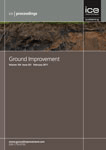
Proceedings of the Institution of Civil Engineers-Ground Improvement
Exploring the Future of Geotechnical EngineeringProceedings of the Institution of Civil Engineers-Ground Improvement is a distinguished journal published by EMERALD GROUP PUBLISHING LTD, dedicated to advancing knowledge and research in the fields of Building and Construction, Geotechnical Engineering, Mechanics of Materials, and Soil Science. With an ISSN of 1755-0750 and an E-ISSN of 1755-0769, this journal has been a vital platform for disseminating innovative research since its inception in 2008. With an impact factor placing it in the Q3 category across multiple engineering disciplines, it ranks favorably in Scopus, ensuring visibility and recognition among scholars globally. The journal offers open access options, allowing for broader dissemination of research findings. Targeting researchers, professionals, and students alike, it aims to foster discussions on ground improvement technologies and methodologies that are essential for sustainable infrastructure development. As it continues to converge its focus until 2024, the Proceedings stands as an imperative resource for those seeking to elevate their understanding and contribute to the ever-evolving field of civil engineering.

JOURNAL OF GEOTECHNICAL AND GEOENVIRONMENTAL ENGINEERING
Championing Open Access Research for Global Engineering ChallengesThe JOURNAL OF GEOTECHNICAL AND GEOENVIRONMENTAL ENGINEERING, published by the ASCE-American Society of Civil Engineers, stands as a pivotal platform for disseminating innovative research in the fields of geotechnical and geoenvironmental engineering. With an impressive impact factor, this journal is ranked Q1 in both Environmental Science and Geotechnical Engineering and Engineering Geology, illustrating its prominence and significant contributions to the scientific community (Scopus Ranks: 38/229 and 48/233, respectively). The journal is dedicated to advancing knowledge and understanding of critical subjects such as soil behavior, environmental sustainability, and the interplay between geotechnics and environmental issues. Operating under the principle of open access, it ensures that vital research is accessible to a global audience, facilitating collaboration and innovation among researchers, professionals, and students alike. Since its inception in 1996, the journal has consistently evolved, with a commitment to maintaining high standards of scholarship and relevance in addressing contemporary challenges in civil and environmental engineering.

GEOTECHNIQUE
Innovating Geotechnical Engineering for a Sustainable FutureGEOTECHNIQUE is a prestigious peer-reviewed journal published by Emerald Group Publishing Ltd, specializing in the fields of Geotechnical Engineering and Earth and Planetary Sciences. Established in 1948, this journal has consistently delivered groundbreaking research and advancements in the science of soil and rock mechanics, engineering geology, and environmental applications, aiming to foster innovation in geotechnical practices. With an impressive impact factor reflected in its Q1 ranking within both the Earth and Planetary Sciences and Geotechnical Engineering categories, GEOTECHNIQUE is recognized as a leading source of scholarly articles, positioning itself among the top 5% in the field. The journal is accessible via subscription, providing a repository of invaluable insights for researchers, professionals, and students striving to push the boundaries of knowledge and application in geotechnical topics. With a robust editorial board and a commitment to excellence, GEOTECHNIQUE continues to contribute significantly to the academic community and the practical engineering landscape.

Journal of the Korean Geosynthetic Society
Empowering Sustainable Infrastructure through Cutting-edge ResearchJournal of the Korean Geosynthetic Society, published by the Korean Geosynthetic Society, is an essential platform dedicated to advancing the field of geosynthetics, a critical area of civil engineering and environmental science. With a focus on innovative materials and applications that contribute to sustainable infrastructure and environmental protection, this journal actively encourages submissions from researchers and practitioners worldwide. Although currently not indexed by Impact Factor systems, the journal's commitment to rigorous peer-review ensures the dissemination of high-quality research and practical insights that drive the field forward. The journal publishes a range of articles including experimental studies, theoretical analyses, and case studies, making it a valuable resource for engineers, researchers, and students alike, fostering collaboration and knowledge sharing within the geosynthetic community. The journal is accessible at http://www.kgs.org. Join us in shaping the future of geosynthetic technology through your contributions!
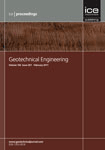
PROCEEDINGS OF THE INSTITUTION OF CIVIL ENGINEERS-GEOTECHNICAL ENGINEERING
Advancing Geotechnical Knowledge for Tomorrow's InfrastructurePROCEEDINGS OF THE INSTITUTION OF CIVIL ENGINEERS-GEOTECHNICAL ENGINEERING, published by Emerald Group Publishing Ltd, is a prestigious journal that serves the dynamic field of geotechnical engineering and broader earth sciences. With an ISSN of 1353-2618 and an E-ISSN of 1751-8563, this journal has established itself as a vital resource for researchers, professionals, and students alike, offering insights into innovative practices and developments within the geotechnical domain. It ranks within the Q2 category for Earth and Planetary Sciences and Geotechnical Engineering as of 2023, demonstrating its significant impact and relevance in these fields. Given its comprehensive scope from 1994 to 2024, the journal provides a platform for high-quality research articles, case studies, and technical notes, although it presently does not offer open access options. Researchers seeking to publish their work will find this journal an essential venue for reaching an audience deeply invested in the advancement of geotechnical methodologies and solutions.

Indian Geotechnical Journal
Transforming Challenges into Opportunities in Geotechnics.Indian Geotechnical Journal, published by SPRINGER INDIA, is a premier publication dedicated to the cutting-edge field of geotechnical engineering and engineering geology. With an ISSN of 0971-9555 and an E-ISSN of 2277-3347, this journal serves as a pivotal platform for researchers, professionals, and students seeking to share innovative research and insights that contribute significantly to the development of the discipline. Recognized for its high-quality content, the journal holds a Q2 ranking in the Geotechnical Engineering and Engineering Geology category as of 2023, reflecting its influence and relevance in the academic community. Spanning contributions from 1972 to 1989 and resuming during 2012 to 2024, it showcases a historical depth coupled with contemporary research trends. Despite being a subscription-based journal, the quality of its articles ensures a broad readership, fostering collaboration and knowledge exchange among geotechnical professionals globally. Positioned at the intersection of theory and practice, the Indian Geotechnical Journal aims to advance understanding, encourage innovation, and address the pressing challenges faced in geotechnical engineering today.

Geomechanics and Engineering
Bridging Theory and Practice in Engineering GeologyGeomechanics and Engineering is a premier journal published by TECHNO-PRESS that delivers high-quality research in the fields of civil and structural engineering, as well as geotechnical engineering and engineering geology. With an ISSN of 2005-307X and an E-ISSN of 2092-6219, this journal serves as a significant repository of innovative methodologies, case studies, and theoretical advancements. Located in South Korea, Geomechanics and Engineering is indexed in Scopus, where it boasts a commendable ranking of #100 out of 379 in Civil and Structural Engineering and #69 out of 229 in Geotechnical Engineering and Engineering Geology, reflecting its impact with substantial percentile rankings of 73rd and 70th, respectively. Over its converged years from 2009 to 2024, the journal aims to advance the understanding of geomechanical phenomena and their application in engineering, making it an essential read for researchers, professionals, and students committed to solving today's pressing engineering challenges.
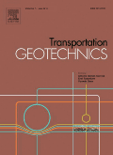
Transportation Geotechnics
Pioneering Insights for Sustainable Transport Systems.Transportation Geotechnics is a premier academic journal published by Elsevier, focusing on the intersection of geotechnical engineering and transportation systems. With an impressive impact factor and categorized in the Q1 quartile across multiple disciplines including Civil and Structural Engineering, Geotechnical Engineering, and Transportation, this journal stands as a vital resource for researchers and practitioners alike. It covers a broad spectrum of topics ranging from soil behavior in transport contexts to innovative materials and methods that enhance infrastructure stability and performance. As an essential platform fostering knowledge dissemination, Transportation Geotechnics enables contributors to share their groundbreaking findings while providing readers with access to cutting-edge research and reviews from 2014 to 2024. Its illustrious Scopus rankings place it prominently in the global research landscape, making it an indispensable tool for students, professionals, and academics dedicated to advancing the field.
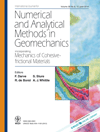
INTERNATIONAL JOURNAL FOR NUMERICAL AND ANALYTICAL METHODS IN GEOMECHANICS
Connecting Research and Practice in Geotechnical InnovationWelcome to the International Journal for Numerical and Analytical Methods in Geomechanics, a prestigious publication dedicated to advancing the fields of geotechnical engineering and computational mechanics. Published by Wiley in the United Kingdom, this journal has been at the forefront of research since its inception in 1977 and continues to provide a vital platform for disseminating innovative methodologies and analytical approaches through 2024. With an impressive impact factor reflecting its excellence, the journal consistently ranks in the Q1 category across multiple domains, including Computational Mechanics, Geotechnical Engineering, and Engineering Geology, making it a key resource for specialists seeking to keep informed on important developments in these areas. Although it does not offer open access, the journal remains highly regarded among researchers and professionals for its rigorous peer-review process and commitment to scientific integrity. As a vital contributor to the field, International Journal for Numerical and Analytical Methods in Geomechanics invites researchers, professionals, and students to explore its comprehensive studies and to advance knowledge at the intersection of numerical analysis and geomechanics.
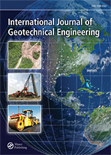
International Journal of Geotechnical Engineering
Shaping Tomorrow's Engineering with Rigorous Research TodayThe International Journal of Geotechnical Engineering, published by Taylor & Francis Ltd, is a leading academic platform dedicated to advancing knowledge and research in the field of geotechnical engineering, environmental engineering, and soil science. With an ISSN of 1938-6362 and an E-ISSN of 1939-7879, this journal has established a credible presence since its inception in 2007, reflecting its commitment to academic excellence through rigorous peer-reviewed research. Ranking in the Q2 quartile across several categories—including Environmental Engineering and Geotechnical Engineering—this journal boasts impressive Scopus rankings, placing it among the top publications in its disciplines. The journal seeks to foster a deeper understanding of soil behavior, geotechnical processes, and their environmental impacts, making it an essential resource for researchers, professionals, and students alike. While it operates under a subscription model, the wealth of knowledge and innovative findings disseminated within its pages are indispensable for anyone engaged in this vital field. With an expanding focus on interdisciplinary research and practical applications, the International Journal of Geotechnical Engineering continues to play a pivotal role in shaping the future of engineering practices worldwide.